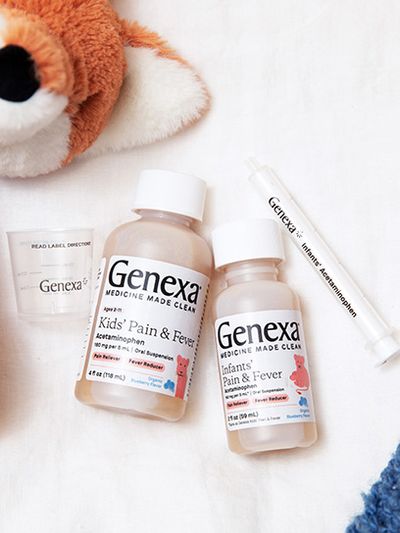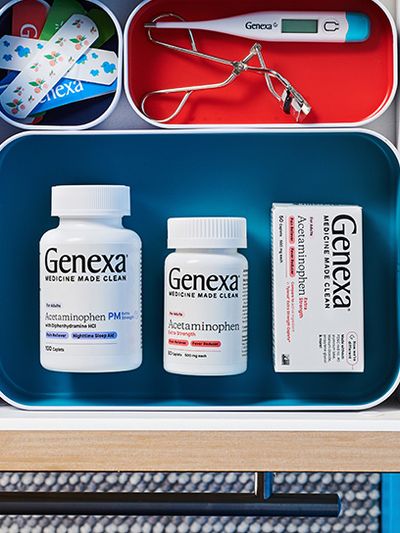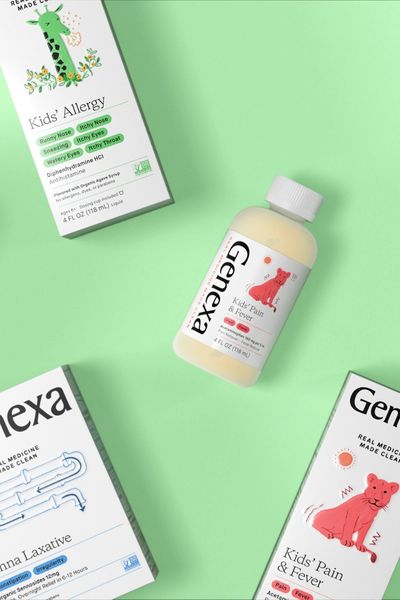How Long Does It Take For A Fever To Break?
Understanding The Symptoms Of Fever
Table of contents:
A fever is what happens when your child’s body temperature raises when they get sick -- a fever is defined as 100.4 degrees Fahrenheit or more. What’s more, a fever is often a sure sign that something is out of the ordinary in your child’s body. While adults can usually safely handle a fever of up to 103°F, the same isn’t true in young children.
The slightest temperature increase in infants and toddlers is cause for concern, as they might have a serious infection that requires immediate medical attention. As such, it’s important to keep a watchful eye over your little ones any time they are sick.
Most fevers go away on their own within a few days. This can sometimes be expedited by using over-the-counter children’s fever reducer. However, some fevers are better left alone, as they might play a key role in fighting off infection in your body.
What Does a Fever Look Like?
A fever is when your body’s temperature rises past its normal range. The average body temperature is 98.6° F, although some people might be slightly lower or higher. An increased body temperature is just one part of having a fever.
Depending on the cause, your child might experience other symptoms, such as:
- Muscle aches and pains
- General weakness
- Chills (shivering)
- Loss of appetite
- Dehydration
- Headache
- Irritability
- Sweating
It’s important to point out that kids who are between six months and five years of age can experience febrile seizures, which are caused by fevers. In fact, nearly 1/3 of kids who have had a febrile seizure will have another one within the next 12 months.
If your child suffers a seizure from their fever, it’s vital that you take them to the emergency room right away. Doctors will determine the best course of action for monitoring their seizures so that you are prepared if your child has another one.
How To Test for Fever
To take your child’s temperature, you have several different types of thermometers to choose from, such as oral (mouth), tympanic (ear), rectal, and temporal artery (forehead).
You’ll get the most accurate measurement of your child’s core body temperature with either an oral or rectal thermometer. Forehead and ear thermometers are certainly convenient, but they offer less accurate measurements of body temperature.
If you are the parent of an infant, it is advised that you use a rectal thermometer for best results. Whenever you report your child’s temperature to their pediatrician, let them know how the temperature was taken and what the results were.
When Will a Fever Break?
Everyone is different when it comes to when their fever breaks. However, the average is one to three days. That said, some fevers are rather persistent and can last up to 14 days. The higher the temperature, the more serious the fever.
Fortunately, there are some things you can do as apparent to help break your child’s fever sooner. Follow these steps for the best results.
Begin by taking your child’s temperature and assess their symptoms. If their temperature is 100.4° F or higher, they have a fever and you should get them in to be seen by their pediatrician as soon as you can.
Then in the meantime, you can proceed to the next steps.
Make sure that they stay in bed and get plenty of rest. Even though they are sick, your child might still want to get up and play. It’s important not to let them do this, as the more energy they expend, the worse they are likely to feel.
They need their energy to go toward healing, so you might have to put your foot down here. Try giving them things they can do in bed so they are less likely to want to get up.
Keep them well-hydrated. The better you can replenish the fluids they’ve lost through sweating, the better they will feel. Water and other clear fluids work well, so be sure to stock up on a variety as it is needed.
Another one of the most beneficial things you can do for your child is to give them the right medication. Acetaminophen is generally seen as the safest and most effective medication for combating fevers in children. Take care to ensure you’re following dosing medications based on weight.
Genexa -- the world’s first clean medicine company. Genexa does away with synthetic additives and chemicals as inactive ingredients, instead opting for real medicine made clean using only what’s needed to actually treat your child with active ingredients like acetaminophen and calcium carbonate.
Kids’ Pain & Fever from Genexa contains the same active ingredient found in leading fever medications but without the artificial inactive fillers that kids don’t need.
What’s more, Genexa strives to make all of their medication taste great for children. Whereas most other companies’ products can taste terrible and aren’t appealing to kids in the slightest, Genexa uses real ingredients to flavor their products. For example, Kids’ Pain & Fever contains organic blueberry flavor.
As a parent, you know that you are giving your child only clean inactive ingredients when they come down with an illness.
Along with the above steps, you also want to keep your child cool. Unless they have chills, you want to remove any extra layers of clothing and blankets.
Have them take warm baths and showers, always avoiding cold water. Cold baths and showers can be incredibly dangerous when your child has a fever, so make certain to check their water temperature before they get in.
And most importantly, if you are ever concerned with your child’s fever, don’t hesitate to take them to see a doctor. It doesn’t matter what the thermometer reads. It’s always better to err on the side of caution when you’re dealing with a child and a fever.
By following these steps, you can help your little one’s fever break sooner rather than later and help them get back to feeling like themselves.
Summary
Fevers are an unfortunate part of getting sick that requires keeping a close eye on your child. It’s important to remember never to leave a fever to chance. If you have a really young child, it’s best to seek medical care right away.
Additional medical tests may also be needed in your child of any age to determine if there’s another illness causing the fever. As such, don’t be afraid to contact your child’s pediatrician over any concerns you may have.
If your child has the flu, follow the above steps to see if you can get the fever to break. If the fever is persistent and lasts more than a few days, your child might have something else going on that needs to be addressed.
Don’t forget to make sure you are using Genexa’s clean medicine. In doing so, you can be sure that your child is getting effective treatment at home with clean inactive ingredients. Genexa makes a long line of organic medications for both kids and adults, so be sure to check out your options for a revamped clean medicine cabinet here!.
At a time when more families are looking for clean alternatives over traditional drugs packed with extras you don’t need, Genexa brings you medicines with the active ingredients you need, but without synthetic fillers you don’t.





